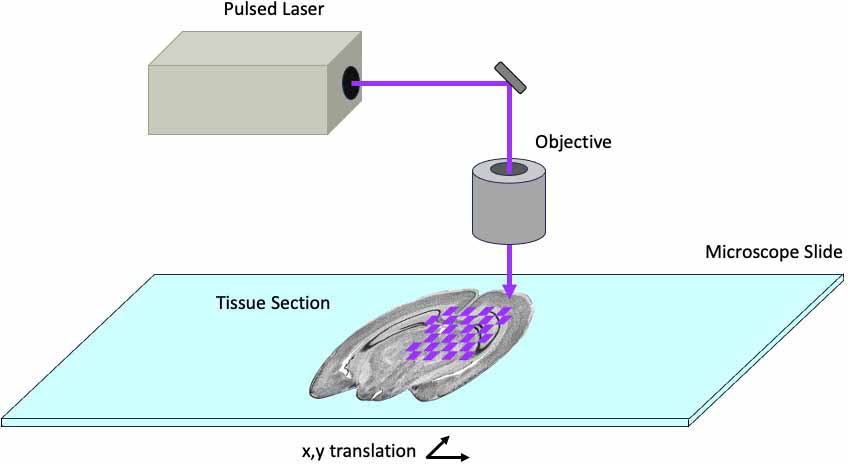1R43GM156259-01 awarded to Laser Bioanalytics
Abstract
The goal of this project is to develop a prototype instrument and techniques for photochemical patterning of lipids in tissue sections for mass spectrometry structural analysis and imaging. The proposed instrument uses focused laser beams to drive photochemical reactions in the tissue that tag lipid double bond locations. The tissue is then analyzed using a commercial matrix-assisted laser desorption ionization (MALDI) mass spectrometer. Fragmentation of the lipids by tandem mass spectrometry produces diagnostic ions that reveal the lipid double bond location that is otherwise indiscernible. Lipids are important cellular components and important in the diagnosis and treatment of many diseases. Mass spectrometry is a powerful method for identifying and quantifying lipids in tissue and mass spectrometry imaging can localize lipids in tissue at spatial resolution approaching cellular precision. One of the greatest challenges in mass spectrometry of lipids is determining the structure of these structurally and biochemically diverse compounds. Determining the location of double bonds in unsaturated lipids can be accomplished using photochemical reactions such as the Paterno-Büchi carbonyl cycloaddition reaction which forms products that readily fragment in mass spectrometry experiments to reveal lipid structure. The device to be developed in this project allows photochemical reactions to be performed on tissue sections with selected patterns that facilitate identification and distribution of lipids. This project will develop new technology for patterned tissue photochemistry for mass spectrometry imaging. The process is general and applicable not only to lipid identification but can also be applied to protein photochemistry and structural analysis, lipid and protein photo-crosslinking, and photochemical cage release reactions. The target commercial potential for this technology is clinical and research laboratories using MALDI mass spectrometry imaging. This technology provides capabilities that are not commercially available in any device and the system can be directly integrated into current mass spectrometry imaging workflows.
